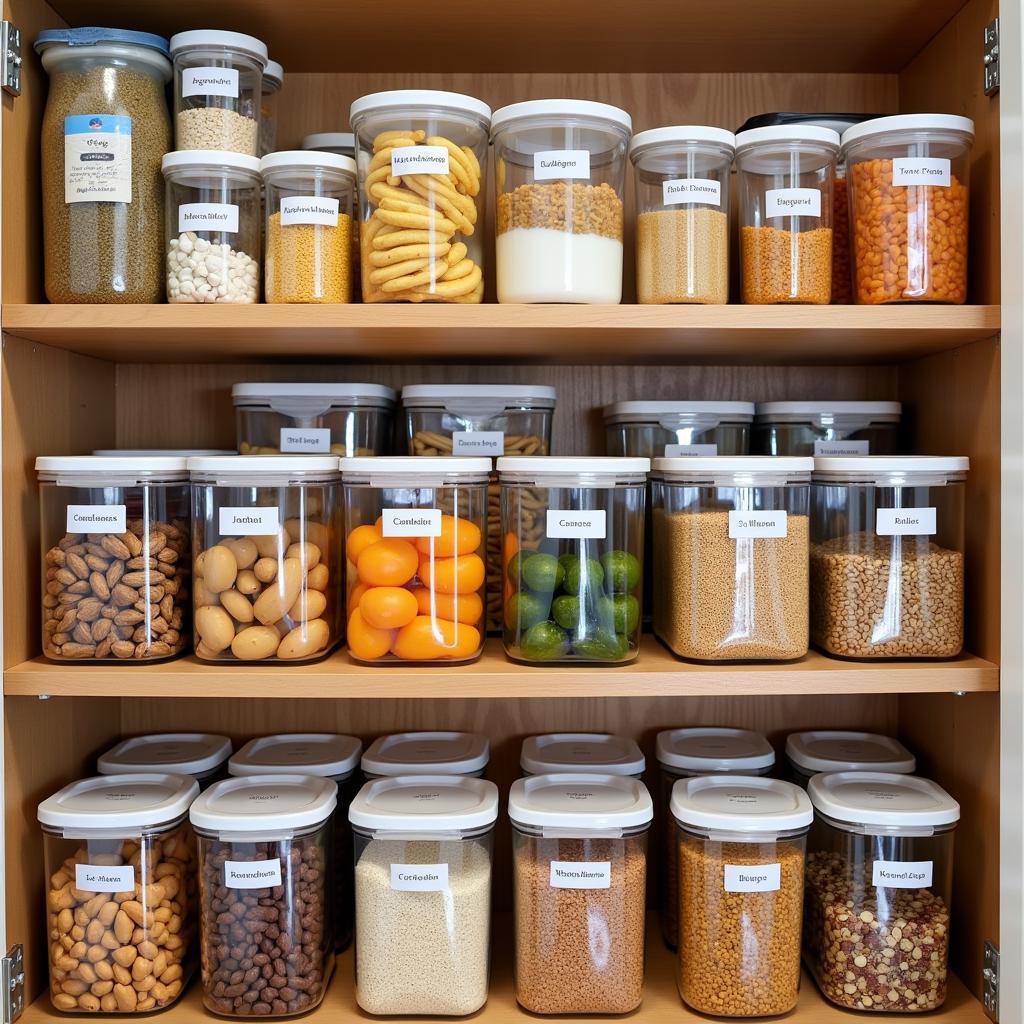Food That Lasts For 25 Years is a fascinating topic for anyone interested in preparedness, emergency supplies, or simply minimizing food waste. While the idea of food maintaining its edibility for a quarter of a century might seem like science fiction, it’s a reality thanks to advancements in food preservation technology. Let’s explore the world of long-term food storage and uncover the secrets to keeping food fresh and nutritious for decades.
What Food Can Actually Last 25 Years?
Several food items can boast an impressive shelf life of up to 25 years, primarily thanks to methods like freeze-drying and proper packaging. Freeze-dried foods, in particular, are known for their longevity. This process removes almost all the water content, inhibiting microbial growth and enzymatic activity that cause spoilage. Think freeze-dried fruits, vegetables, meats, and even entire meals. When stored correctly in airtight containers, away from light and extreme temperatures, these foods can remain palatable and nutritious for remarkably long periods. Other long-lasting staples include honey, white rice (stored properly), and certain types of dried beans.
Storing food long-term isn’t just about throwing some cans in the back of your pantry. Factors such as storage temperature, humidity, and the quality of the packaging play critical roles. For example, can you store freeze dried food in a garage? While possible, it’s not ideal due to temperature fluctuations. A cool, dry, and dark environment is key for maximizing shelf life.
Why Choose Food That Lasts for 25 Years?
The benefits of having food that lasts for 25 years are numerous. Preppers often prioritize long-term food storage as a way to prepare for emergencies, natural disasters, or economic instability. Having a readily available supply of nutritious food provides peace of mind and a sense of security. Beyond emergency preparedness, long-lasting food can also be a practical solution for those living in remote areas with limited access to fresh groceries.
Beyond these practical benefits, food that lasts for 25 years can also be surprisingly economical. While the initial investment might seem higher, the reduced need to replace expired food items over time can lead to significant savings. Imagine not having to throw out stale or spoiled food!
How to Store Food for Maximum Shelf Life
Proper storage is essential for ensuring food remains edible for extended periods. Airtight containers are crucial for preventing moisture and oxygen from degrading the food. Storing food in a cool, dark, and dry environment further protects it from spoilage.
- Use airtight containers: Choose high-quality, airtight containers made of food-grade materials.
- Control temperature and humidity: A cool, dry, and dark location is ideal. Avoid areas with fluctuating temperatures, like garages or attics.
- Organize and label: Clearly label all containers with the contents and date of packaging. Rotate your stock using the FIFO (First In, First Out) method to minimize waste.
 Organized Long-Term Food Storage
Organized Long-Term Food Storage
Dehydrated vs. Freeze-Dried: Which is Best for Long-Term Storage?
While both dehydration and freeze-drying preserve food by removing water, there are key differences. Freeze-drying, although more expensive, retains more of the food’s original flavor, texture, and nutrients. Dehydrated food, while a more affordable option, may experience some changes in these areas. Considering the pros and cons of each method is important when choosing food for long-term storage. Food dehydrator vs freeze dried can provide a more detailed comparison.
Is 25-Year Shelf Life Realistic?
While manufacturers often state a 25-year shelf life, it’s important to note that this is under ideal storage conditions. Factors like temperature fluctuations, exposure to light, and even the quality of the packaging can affect the actual longevity of the food. Regularly inspecting your stored food and rotating your stock are crucial for ensuring its quality.
“Maintaining optimal storage conditions is paramount for maximizing the shelf life of your food,” says Dr. Emily Carter, a food scientist specializing in preservation techniques. “Even minor deviations in temperature or humidity can significantly impact longevity.”
Conclusion
Food that lasts for 25 years offers an invaluable solution for emergency preparedness, remote living, and even minimizing food waste. By understanding the science behind long-term food storage and implementing proper storage techniques, you can create a reliable and nutritious food supply that will stand the test of time. Invest in high-quality, long-lasting food today for peace of mind tomorrow.
FAQ
- What are the best types of food for long-term storage? Freeze-dried foods, honey, white rice (stored correctly), and certain dried beans.
- How should I store long-term food supplies? In airtight containers, in a cool, dry, and dark location.
- What is the difference between freeze-dried and dehydrated food? Freeze-drying retains more nutrients and original qualities, while dehydration is more affordable.
- Does food really last 25 years? Yes, under ideal storage conditions.
- Why should I consider long-term food storage? For emergency preparedness, remote living, or reducing food waste.
- What are the key factors affecting shelf life? Temperature, humidity, light exposure, and packaging quality.
- How often should I inspect my stored food? Regularly, at least once a year, to check for any signs of spoilage or damage.
For assistance, contact us 24/7: Phone: 02437655121, Email: minacones@gmail.com, or visit us at 3PGH+8R9, ĐT70A, thôn Trung, Bắc Từ Liêm, Hà Nội, Việt Nam.